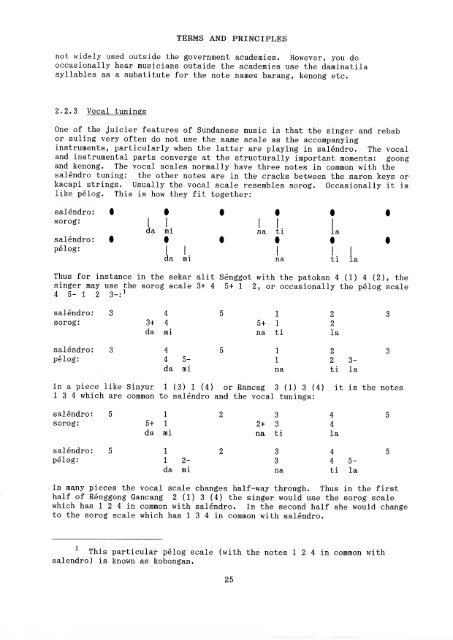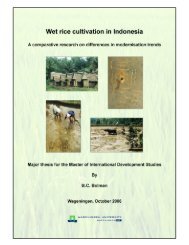Guide to Sundanese Music - Free EBooks Library
Guide to Sundanese Music - Free EBooks Library
Guide to Sundanese Music - Free EBooks Library
Create successful ePaper yourself
Turn your PDF publications into a flip-book with our unique Google optimized e-Paper software.
TERMS AND PRINCIPLES<br />
not widely used outside the government academies. However, you do<br />
occasionally hear musicians outside the academies use the daminatila<br />
syllables as a substitute for the note names barang, kenong etc.<br />
2'2.3 Vocal tunings<br />
One of the juicier features of <strong>Sundanese</strong> music is that the singer and rebab<br />
or suling very often do not use the same scale as the accompanying<br />
instruments, particularly when the latter are playing in salendro. The vocal<br />
and instrumental parts converge at the structurally important moments; goong<br />
and kenong. The vocal scales normally have three notes in common with the<br />
salendro tuning: the other notes are in the cracks between the saron keys or<br />
kacapi strings. Usually the vocal scale resembles sorog. Occasionally it is<br />
like pelog. This is how they fit <strong>to</strong>gether:<br />
salendro:








